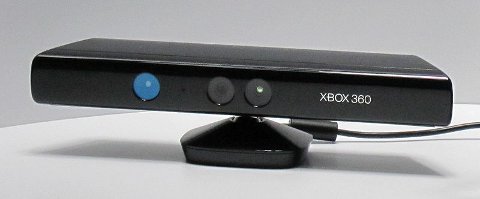3D Vision for Embedded Systems
3D Vision is an integral part of every autonomous robot. Getting it right is not trivial and certainly not cheap. We struggled with this problem ourselves when trying to build an autonomous Mikrokopter drone. Cheap systems are not very reliable, good systems are disproportionately expensive and often very heavy. However I believe there may be hope yet for usable and cheap 3D vision systems for hobbyist and hackers alike. Granted, Microsoft is a rather unexpected reason for such hope but their Project Natal (now Kinect) might just be what we have been waiting for (image by litheon).

It’s a structured-light 3D scanner developed by PrimeSense. While being used for measuring the three-dimensional shape of an object I think it should be possible to use it as a 3D vision system for indoor robots. So I would really like to see hackers taking this cheap device apart and re-purposing it for home-brew 3D vision. In their paper “A low cost 3D scanner based on structured light“, Rocchini et al. describe how to build one and this incredible instructables article explains how to build one also and even provides source code.
Of course there are other exiting technologies out there, a comprehensive list of 3D vision devices can be found at acroname.com (including prices). The devices range from expensive but effective and impressive Time-of-flight cameras (vendors: [1] [2] [3]) to LIDAR systems. The latter were very successfully used in DARPA’s Urban Challenge autonomous driving competition. A very interesting video that describes how LIDAR works in detail is available at blip.tv.
Of course there’s also the good old ultrasonic and infrared sensors that are cheap and have low resolution and are moderately reliable but they can certainly be very useful.
No Comments
Sorry, the comment form is closed at this time.